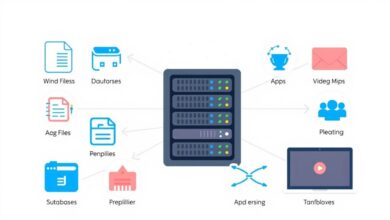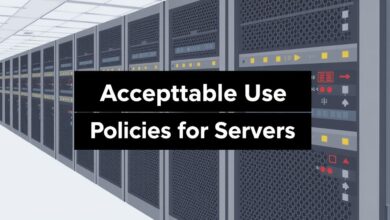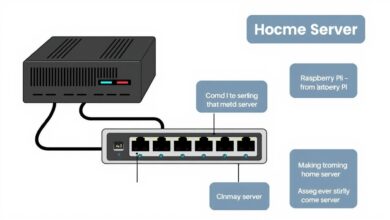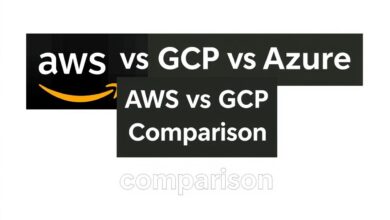Demystifying Windows Server Licensing Costs for Beginners

Understanding Windows Server Licensing Costs: A Beginner’s Deep Dive
Welcome to the world of servers! As you embark on your journey to understand server technology, one area that can quickly become confusing and costly is software licensing. This is especially true when dealing with powerful and widely used operating systems like Microsoft Windows Server. Understanding Windows Server licensing costs isn’t just for IT veterans; it’s a fundamental skill for anyone managing even a small server, whether it’s in your home lab or a cloud environment. Get it wrong, and you could face unexpected expenses or compliance issues.
This post will take a deeper dive into the key aspects of Windows Server licensing, breaking down the models, cost drivers, and strategies to help beginners navigate this complex landscape. We’ll focus primarily on Microsoft’s approach, as outlined in recent updates.
[Hint: Insert image/video illustrating different licensing models (e.g., per-core diagram)]The Foundation: Perpetual Licensing and Software Assurance
Historically, Microsoft server licensing has been based on a perpetual model. This means you pay an upfront fee for the right to use the software indefinitely on a specific piece of hardware. Think of it like buying a house – you own it.
However, the software world is dynamic. To address the need for ongoing updates, support, and access to new versions, Microsoft offers Software Assurance (SA). This is an optional subscription that you purchase alongside the perpetual license. SA provides benefits like version upgrades, access to deployment options, and support. While optional, it’s often necessary to keep your server infrastructure current and leverage new features. It’s like paying for a maintenance plan on your house – it ensures you get repairs and improvements over time.
The Shift to “Per Core” Licensing
Perhaps the most significant change in recent years is the move to a ”per Core” licensing model for standard editions of Windows Server. Previously, it was often based on physical processors (sockets). Now, the cost is directly tied to the processing power of your server.
* You must license all physical cores in the server.
* There is typically a minimum license requirement, often 8 cores per processor and 16 cores per server, even if the server has fewer cores.
* The cost scales up with higher core counts. More powerful servers with many cores will incur significantly higher licensing costs.
This shift requires careful planning when purchasing new server hardware. A server with more cores might seem like a performance bargain initially, but the long-added cost of licensing can quickly outweigh the hardware savings.
[Hint: Insert image/video showing a CPU with multiple cores highlighted, relating it to licensing]Navigating Editions and Their Costs
Microsoft offers different editions of Windows Server, each with varying capabilities and, crucially, different price tags.
* Windows Server Essential: This edition is designed for smaller businesses and often has a significantly lower upfront cost. It comes with limitations, such as a maximum number of users and devices, and may not support as many virtual machines.
* Windows Server Standard: A more robust edition that supports more users and allows for running a limited number of Virtual Machines (VMs) (typically two, with per-core licensing covering these VMs).
* Windows Server Datacenter: The most comprehensive edition, offering unlimited VM rights, advanced storage features, and shielded virtual machines. This edition has the highest per-core cost but can be more economical if you plan to run a large number of VMs on a single server.
Understanding the features and limitations of each edition is vital to avoid overpaying for capabilities you don’t need or underpaying and facing compliance issues.
The Essential Role of CALs
Beyond the server software itself, you often need to purchase Client Access Licenses (CALs). CALs grant users or devices the legal right to access the Windows Server software.
* User CALs: Purchased for each user who accesses the server, regardless of how many devices they use.
* Device CALs: Purchased for each device that accesses the server, regardless of how many users use that device.
You need to assess your environment to determine whether User CALs or Device CALs are more cost-effective. Ignoring CALs is a common mistake that can lead to non-compliance.
Optimization and Cost Savings Strategies
Managing Windows Server licensing costs effectively requires a strategic approach.
* Right-Sizing Hardware: Given the per-core model, carefully select servers based on actual workload needs, not just maximum potential. Don’t buy more cores than you’ll realistically utilize if licensing is a significant concern.
* Bring Your Own License (BYOL): For those considering cloud platforms like AWS or Azure, BYOL can be a significant cost-saving tactic. If you have existing perpetual licenses with Software Assurance, you might be able to use them in the cloud under specific programs like the Azure Hybrid Benefit. This allows you to pay for the cloud infrastructure without paying the full cloud provider’s rate for the Windows Server license.
* Leveraging Virtualization: With Standard edition covering two VMs per license (provided cores are licensed), maximizing the use of those two VMs can be cost-efficient. Datacenter edition becomes attractive for environments with high VM density.
* Consider Alternative Editions: If your needs are simple and you fit within the limitations, Windows Server Essential can offer substantial savings.
* Review and Optimize Regularly: Your server needs and usage patterns can change. Regularly review your license usage and compare it against your deployed licenses to ensure you are optimized and compliant.
Beyond Windows Server: Other Microsoft Licensing
It’s worth noting that other Microsoft server products, such as SQL Server, also have complex licensing models. Like Windows Server, SQL Server has adopted a per-core model. It also offers options like BYOL and Service Provider License Agreements (SPLA) for hosting providers. Understanding the licensing for each piece of software running on your server is crucial for accurate cost estimation and compliance. You can learn more about different server operating systems in our guide: Understanding Windows Server Editions: Essentials vs Standard vs Datacenter Explained.
Conclusion
Understanding server licensing, particularly Windows Server licensing costs, is a critical skill that saves money and ensures legal compliance. While the “per Core” model adds complexity, breaking down the costs by edition, understanding the role of CALs, and leveraging optimization strategies like BYOL and right-sizing can make the process manageable. Start by assessing your actual needs, research the specifics of the edition and licensing model you’re considering, and factor in potential future growth. Licensing might not be the most exciting part of server management, but mastering it is essential for building a sustainable and cost-effective infrastructure. For official and detailed information on Microsoft licensing, always refer to Microsoft’s official licensing resources.




